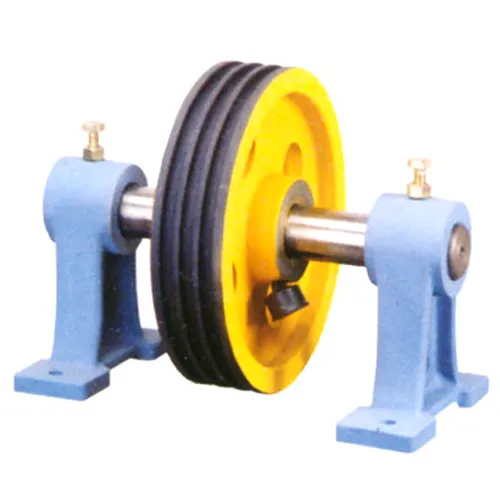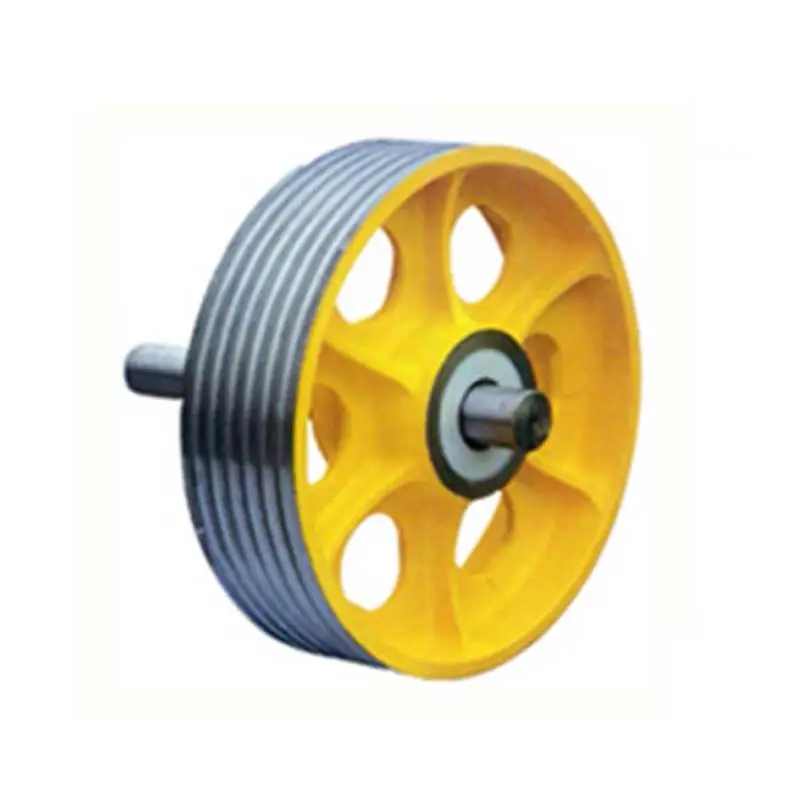Product Description
Application
Tower crane, construction lift, crane, ship crane,
Truck crane, mining and other construction machinery
Advantage Products
Company Profile
About Us
Focus on a variety of industries
Provide maintenance solutions
Optimize customer inventory and reduce cost
Established in 2012, HangZhou Granville is a branch of the Granville Group. With our experience, competitive prices and excellent service, we have won the praise of our customers. Our business involves standard and special industrial parts, automotive parts and construction machinery parts required for a variety of different industrial applications.
Our main products include
Bearing series :
ball bearings, deep groove ball bearings, self-aligning ball bearings, angularcontact ball bearings, cylindrical roller bearing, tapered roller bearings, thrust ball bearings, thrust rollerbearings, needle bearings, spherical bearings, joint bearings, pillow blocks, linear bearings, etc.
Accessories series:
Automotive Spare Parts,Seals & O-rings ,Power transmission parts Chain and Sprocket
Our products are mainly exported to Europe, America, Middle East, Southeast Asia, India, Pakistan, Bangladesh, Singapore, Korea and other countries around the world. We have a large number of products in stock, which can be delivered with high efficiency in the shortest possible time to solve your matching problems in time. In addition, we have reliable quality and quantity of products to offer. We adhere to the principle of CHINAMFG situation and insist on “providing comprehensive quality products and best reputation” to provide excellent services to our customers.
What We Do
Comprehensive product range:
– Bearings
– Oil seals, Transmission belt
– Chain and Sprocket
– Hub assembly & Wheel bearings
– Coupling, castings
– Linear motion
Our Advantages
1. We have the most advanced bearing process equipment, CNC automatic facilities, and testing instruments.
2. We manufacture ball bearings and mounted bearing units, and also provide a strong full range of products, including electric motors and components One-stop partnerships products from our audited supply chain.
3. All products are manufactured exclusively by companies with ISO 9001:2008 certified Quality Systems which use state-of-the-art machines. The quality path starts from the beginning to deliver and goods’ quality trackable
Our Values
Behavior-based, service-oriented, focused on results, and committed to continuous improvement
Factory
To be a leader in providing the best valuable (Reasonable cost, Reliable quality) supply of precision rollers.
Providing this value will help our customers remain competitive in the global marketplace.
Advantage Manufacturing Processes and Quality Control:
01Heat Treatment
02 Centerless Grinding Machine 11200 (most advanced)
03 Automatic Production Lines for Raceway
04 Automatic Production Lines for Raceway
05 Ultrasonic Cleaning of Rings
06 Automatic Assembly
07 Ultrasonic Cleaning of Bearings
08 Automatic Greasing, Seals Pressing
09Measurement of Bearing Vibration (Acceleration)
10 Measurement of Bearing Vibration (Speed)
11 Laser Marking
12 Automatic Packing
After Sales Service
- Optimize customer inventory and reduce cost
- Provide maintenance solutions
FAQ
Q1.Can you accept OEM and customization?
A: Yes. We can customize it according to the samples and drawings you provide.
Q2.Do you keep a stock of these things?
A: In stocks
Q3.Can you provide samples free of charge?
A: Yes. We can provide samples free of charge. But the freight is paid by the customer.
Q4.What’s the delivery date?
A:The delivery time of sample orders is 3 working days.The bulk orders are 5-10 working days.
Q5: Why your price is higher than others?
A: Price = quality . We firmly believe that by the quality of the customer is always get more reliable than on price . So we insist on doing high-quality products.
Q6:What kind of transport do you have ?
A: According to the weight,we will choose the most appropriate mode of transport for you. Our freight forwarding is efficient and cheap.
/* March 10, 2571 17:59:20 */!function(){function s(e,r){var a,o={};try{e&&e.split(“,”).forEach(function(e,t){e&&(a=e.match(/(.*?):(.*)$/))&&1
| Rows Number: | Single |
|---|---|
| Material: | Stainless Steel |
| Lubrication: | Sinopec/Great Wall/Shell/Mobil/SRL/Kluber |
| Samples: |
US$ 0/Piece
1 Piece(Min.Order) | Order Sample Sample unit price depends on the specific model
|
|---|
| Customization: |
Available
| Customized Request |
|---|
.shipping-cost-tm .tm-status-off{background: none;padding:0;color: #1470cc}
|
Shipping Cost:
Estimated freight per unit. |
about shipping cost and estimated delivery time. |
|---|
| Payment Method: |
|
|---|---|
|
Initial Payment Full Payment |
| Currency: | US$ |
|---|
| Return&refunds: | You can apply for a refund up to 30 days after receipt of the products. |
|---|
How does the quality and precision of lifting pulleys impact the accuracy of lifting operations?
The quality and precision of lifting pulleys have a direct impact on the accuracy of lifting operations. The design, construction, and performance of pulleys influence the control, stability, and reliability of the lifting process. Here’s a detailed explanation of how the quality and precision of lifting pulleys impact lifting operations:
1. Load Control: High-quality lifting pulleys are designed to provide precise and smooth load control. They enable operators to accurately adjust the speed, direction, and position of the load during lifting operations. Pulleys with precise load control capabilities ensure that the load is lifted, lowered, or moved with accuracy and minimal deviation, resulting in precise positioning and placement of the load.
2. Stability and Balance: Precision-engineered lifting pulleys contribute to the stability and balance of the lifting system. They are designed to minimize vibrations, wobbling, or oscillations during the lifting process. This stability ensures that the load remains balanced and steady, reducing the risk of accidents, load shift, or damage to the lifting equipment. The quality of pulleys directly affects the system’s ability to maintain stability and balance throughout the lifting operation.
3. Efficiency and Smooth Operation: High-quality lifting pulleys are engineered to minimize friction and resistance, allowing for efficient and smooth operation. They are often equipped with low-friction mechanisms, such as ball bearings, to reduce energy loss and enable smooth rotation. Pulleys that operate smoothly require less force to lift the load, leading to improved energy efficiency and precise control over the lifting operation.
4. Reduced Jerks and Sudden Movements: Lifting pulleys that exhibit high precision and quality help prevent sudden jerks or uncontrolled movements during lifting. They ensure that the load is lifted or lowered smoothly without abrupt starts or stops. This reduces the risk of shock loads, equipment damage, and potential injury to workers. By minimizing jerks and sudden movements, precise pulleys contribute to the overall safety and accuracy of lifting operations.
5. Load Distribution: Quality lifting pulleys distribute the weight of the load evenly across the lifting system. They enable the load to be spread over multiple ropes or cables, ensuring a well-balanced distribution of forces. This even load distribution minimizes stress on individual components, enhances the system’s stability, and improves the accuracy of load handling and positioning.
6. Minimal Deflection and Stretching: High-quality lifting pulleys are designed to minimize deflection and stretching of the ropes or cables during lifting operations. They ensure that the cables remain aligned and experience minimal elongation or deformation. This reduces the risk of inaccurate load positioning caused by sagging or stretching of the lifting elements, ensuring precise and consistent lifting performance.
7. Reliability and Longevity: The quality of lifting pulleys directly impacts their reliability and longevity. Well-designed pulleys constructed with durable materials and precise manufacturing techniques are more likely to withstand heavy loads, frequent use, and harsh operating conditions. Reliable pulleys contribute to the accuracy of lifting operations by minimizing the chances of unexpected failures or malfunctions that can compromise the precision and safety of the lifting process.
8. Compatibility and
What maintenance procedures are necessary to ensure the safe and reliable operation of lifting pulleys?
Proper maintenance procedures are essential to ensure the safe and reliable operation of lifting pulleys. Regular maintenance helps identify and address potential issues before they escalate, ensuring that the pulleys function optimally and minimize the risk of accidents or equipment failures. Here are some important maintenance procedures for lifting pulleys:
1. Inspection: Regular visual inspections of the pulleys should be conducted to check for any signs of damage, wear, or misalignment. Inspect the sheaves, bearings, mounting hardware, and other components for cracks, deformities, excessive wear, or corrosion. Look for any loose or missing parts that may affect the pulley’s performance.
2. Lubrication: Proper lubrication is crucial for the smooth operation of lifting pulleys. Follow the manufacturer’s recommendations regarding the type and frequency of lubrication. Apply lubricant to the bearings, sheaves, and other moving parts as required. Ensure that the pulleys are adequately lubricated to reduce friction and prevent premature wear.
3. Tension Adjustment: Check the tension of the lifting cable or rope regularly. The cable or rope should be properly tensioned to prevent slippage or excessive stress on the pulleys. Adjust the tension as needed according to the manufacturer’s guidelines or industry standards.
4. Cleaning: Keep the pulleys clean and free from dirt, debris, or contaminants that could interfere with their proper operation. Use a brush or compressed air to remove any buildup or foreign particles. Avoid using harsh chemicals or solvents that may damage the pulley’s components.
5. Replacement of Worn or Damaged Parts: If any component of the pulley, such as the sheaves, bearings, or mounting hardware, is worn, damaged, or showing signs of deterioration, it should be promptly replaced with suitable replacements recommended by the manufacturer. Use genuine parts to ensure compatibility and maintain the pulley’s performance.
6. Periodic Load Testing: Periodically conduct load testing of the lifting system to ensure the pulleys can handle the intended load capacity. Follow industry standards and guidelines for load testing procedures. This testing helps verify that the pulleys and associated components can safely support and lift the specified loads.
7. Training and Operator Awareness: Ensure that operators are trained in proper lifting procedures, including the use and maintenance of lifting pulleys. Educate them about the importance of regular maintenance, inspection, and safe operating practices. Encourage operators to report any abnormalities or concerns regarding the pulleys to the maintenance personnel or supervisor.
It is crucial to follow the manufacturer’s recommendations and guidelines for maintenance procedures specific to the lifting pulleys in use. Additionally, adhere to any applicable industry standards and regulations governing the maintenance of lifting equipment. By implementing regular maintenance procedures, operators can promote the safe and reliable operation of lifting pulleys, prolong their service life, and minimize the risk of accidents or equipment failures.
What is a lifting pulley, and how is it used in various lifting applications?
A lifting pulley is a mechanical device used to change the direction of a lifting force and facilitate the lifting or lowering of heavy objects. It consists of a grooved wheel or sheave that rotates on an axle and is typically mounted on a frame or housing. Here’s an explanation of how lifting pulleys are used in various lifting applications:
1. Block and Tackle Systems: Lifting pulleys are commonly used in block and tackle systems, which utilize multiple pulleys to create a mechanical advantage. By arranging the pulleys in a specific configuration, such as a fixed pulley and a movable pulley, block and tackle systems allow users to lift heavy loads with less effort. Lifting pulleys in block and tackle systems distribute the load across multiple ropes, reducing the force required to lift the load.
2. Crane and Hoist Systems: Lifting pulleys are integral components of cranes and hoists used in construction, manufacturing, and other industries. In these systems, the pulleys are part of the lifting mechanism and are responsible for raising and lowering heavy loads. The pulleys in crane and hoist systems provide the necessary mechanical advantage to lift heavy objects safely and efficiently.
3. Elevator Systems: Elevators rely on lifting pulleys to move the elevator car up and down. The pulleys, along with the elevator cables or ropes, form the traction system that lifts and lowers the car. The pulleys in elevator systems ensure smooth and controlled movement while distributing the load evenly across the cables, allowing for safe transportation of passengers or goods.
4. Rigging and Rigging Gear: Lifting pulleys are often used in rigging applications, such as in the construction or entertainment industry. They are employed to redirect the lifting force, change the direction of the load, or create lifting configurations suitable for specific tasks. Lifting pulleys used in rigging applications are designed to withstand heavy loads and provide reliable lifting capabilities.
5. Material Handling Equipment: Lifting pulleys are utilized in various material handling equipment, including winches, come-alongs, and manual chain hoists. These devices incorporate pulleys to facilitate the lifting and transportation of heavy objects. Lifting pulleys in material handling equipment enable operators to apply force in the desired direction, making it easier to handle and move heavy loads.
6. Sailing and Boating: Lifting pulleys, also known as blocks, are extensively used in sailing and boating applications. They are employed to control and adjust the tension in ropes and lines, such as halyards and sheets. Lifting pulleys in sailing and boating enhance the efficiency of sail handling, allowing sailors to hoist, lower, and trim sails with ease.
Lifting pulleys are versatile devices that find application in a wide range of lifting scenarios. Whether in block and tackle systems, crane and hoist systems, elevator systems, rigging, material handling equipment, or sailing and boating, lifting pulleys play a crucial role in facilitating safe and efficient lifting operations.
editor by CX
2024-01-18




